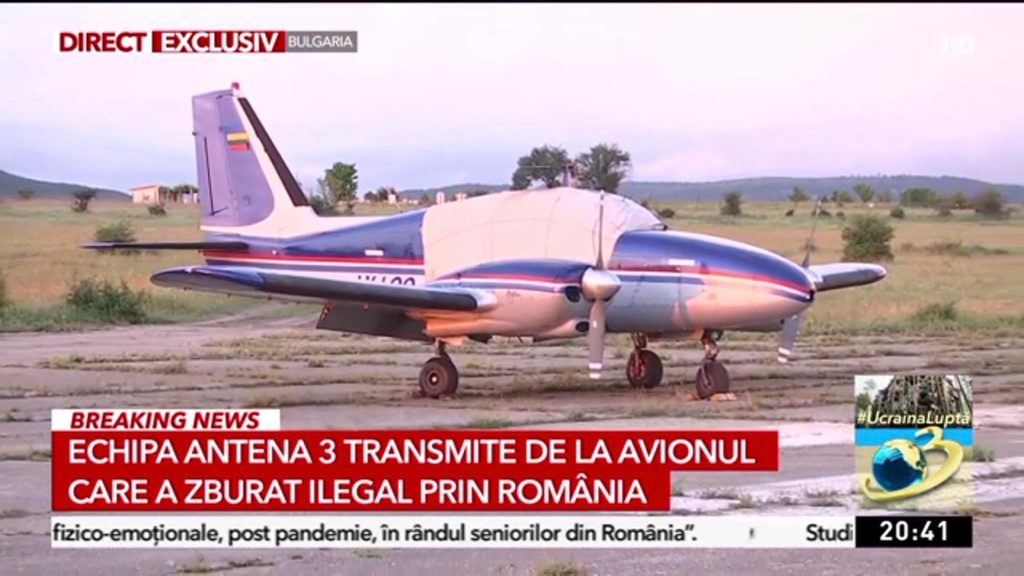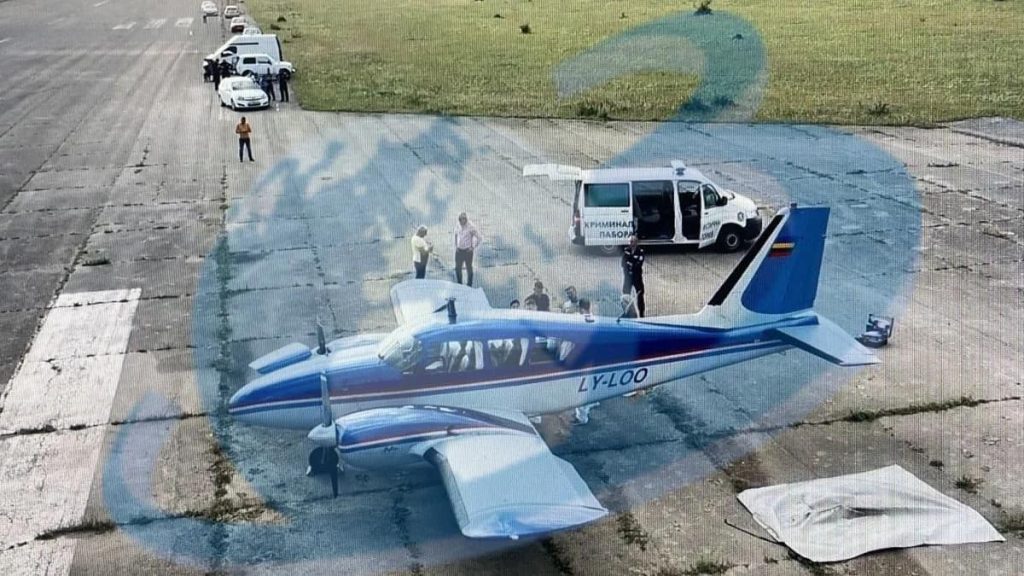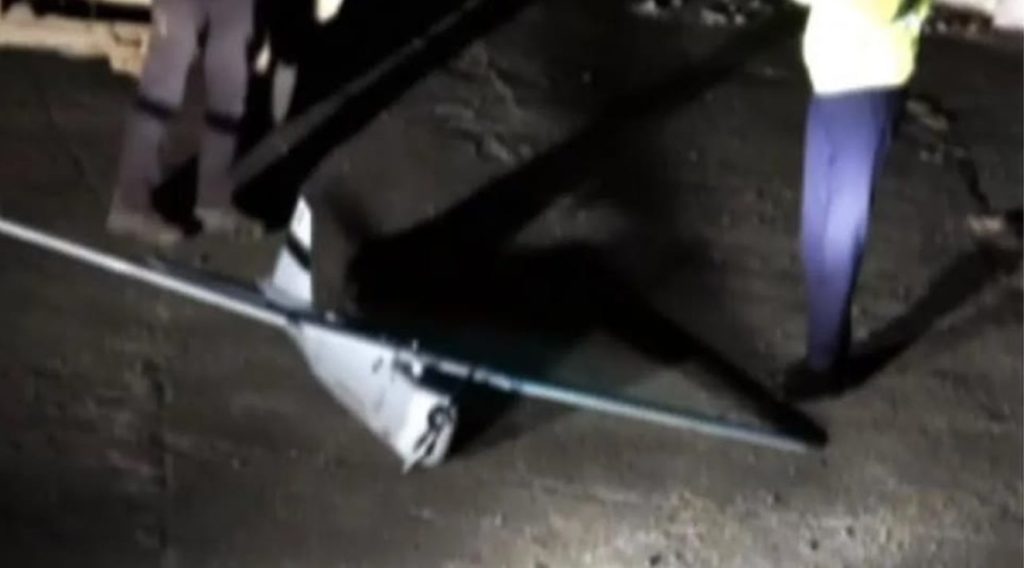After Russia invaded Ukraine, there have been some disturbing aircraft flights over Central and Eastern Europe. Last week in Lithuania a mystery aircraft took off from Lithuania and illegally entered the airspace of several countries. The plane was later found in Bulgaria but without the crew. The aircraft that took off from Lithuania flew over Hungary, briefly over Serbia and Romania, and on Wednesday at 19:09, entered the airspace of Bulgaria.
The two-passenger aircraft had no approved flight plan, and its transponders were switched off. The pilot did not respond to radio requests and visual signals. According to Hungarian press, the aircraft entered Hungarian airspace from Slovakia and landed at Hajdúszoboszló Airport without permission. Portal Rtl.hu informed the plane also tried to refuel at the small Hungarian airport in Hajdúszoboszló, but not quite successfully. The portal said the airport supervisor wanted to talk to two people who had flown illegally, but they allegedly threatened him.
When the police arrived and approached the plane, the pilot “gave it full throttle and took off” violating all flight rules.
The plane spent there about twenty minutes, and images from one of the airport’s cameras show that something was going on around the plane: the fliers are thought to have refueled with available canisters.
According to the Romanian Ministry of National Defense, the plane had no confirmed flight plan and did not respond to any attempts to establish radio communication and ignored all visual signals.

Bulgarian media reported that at around 17.49 CET the plane entered Romanian airspace in the vicinity of Oradea, where it was intercepted by US Air Force F-16 Fighting Falcons from 86th Feteşti Air Base.
At around 18:36 CET, the surveillance was taken over by two Romanian Air Force F-16s. While being followed, the aircraft entered Serbian airspace for two minutes in an area between Drobeta-Turnu Severin and Korbovo.
Then, at 19:09 CET, the aircraft entered Bulgarian airspace, but no Bulgarian Air Force fighter jets were scrambled. It was flying at a low altitude, difficult to catch by fighters.
This plane broke almost all the rules: it didn’t establish any contact with the airport, and it didn’t communicate with the air control upon entering the country either. Later, when he was “caught” by the Gripe, he did not respond to radio calls or visual signals.
The Prosecutor’s Office of Bulgaria has opened an investigation to locate the pilot of the plane, who abandoned the aircraft immediately after landing on an unused runway at Buhovți Airport, a small airport located near Targovishte city in Bulgaria. The plane was reportedly found covered with a tarpaulin with no signs of any crew or passengers.

The Bulgarian Air Force did not immediately scramble the fighter jets because “the plane was not considered a threat at any time”, the country’s Defense Minister Dragomir Zakov told. Еhe aircraft was flying at a very low altitude and low speed, which would have made it difficult for fighter jets to intercept it. The plane had stopped for refueling in Vidin, a town in north-western Bulgaria.
The aircraft’s registration number was LY-LOO. This registration number is held by the 1962 PA-23-250 Aztec aircraft of the aircraft manufacturer Piper but is no longer valid. It’s construction number is 27-2250. However, the registration number of this plane was canceled 2006-03-14. Engine calendar resources expired in 2014. Propeller Resources expired in 2017.
The plane had 7,700 flight hours, had not been used since 2015, had been painted and refurbished since 2007, and needed engine and propeller checks. The aircraft weighs 2,360 kilograms and has a range of 1,600 km, can reach a height of 6,000 meters, and can reach a maximum of 398 km / h, according to the information published in the sale announcement. The baggage capacity is 150 lbs.
It was previously owned by two French and one Swiss, and then it was sold to Bronius Zaronskis, Lithuanian owner in 2006.
Bronius Zaronskis was born in Mediniai (Pasvalys district) in 1950 (1950). He graduated from the Moscow Military Aviation School in 1968, and in 1973 graduated from the Lithuanian Polytechnic University in Kaunas. In 1981 he graduated from the Vilnius Institute of Civil Engineering. 1988–1993 and since 2001 – Head of Panevėžys Aeroclub. 1991–1993 – Commander of Panevėžys Aviation Squadron, colonel, commander of the district mission of the Lithuanian Armed Forces Reserve Soldiers Association.

The aircraft was sold by Bronius Zaronskis on the internet, and he, quite coincidentally, is a director of a small Nida Air Park airport, where he moved in 2020.
A week before the incident the aircraft was sold by Bronius Zaronskis for EUR 29,000.
According to him, three men came to inspect the aircraft before a deal. They were not Lithuanians and they communicated with each other in Russian. Finally, the plane was bought by an organization, but the seller claimed he knows neither its name, nor names of buyers, which looks very weird.
Zaronskis claimed he doesn’t remember which organization bought it because it was written in foreign language. But considering they negotiated in Russian, as the seller graduated from Military School in Moscow, it is highly doubtful he could not read the name of the company. Moreover, there are doubts that buyers who speak Russian to each other and with the seller, use the language of a third country (except Russia or Lithuania) to sign a contract.
It is likely, therefore, the aircraft’s owner got extra money for not disclosing who bought it, and the buyers were not going to register the aircraft, as they bought it for one flight (that is why they bought the end-of-life one). The contract was most likely fictional, signed by non-existent company. Zaronskis sought to hide the identity of the buyers, as he told the Lithuanian LRT the buyers were Ukrainian, Romanian, or Bulgarian, as the fact they negotiated in Russian prioritizes the theory they were from Russia.
According to Lithuanian Airports, the aircraft did not take off from any major Lithuanian airport in Vilnius, Kaunas, or Palanga, but it could have done that from other smaller airports in the country. The plane was stored at Panevėžys or Nida airport, so that was probably a point to take off.
The purpose of this mission might have been:
– to deliver and dump a cargo (cash, weapon),
– to transfer someone
– to test the air defense system in the area,
– to track routes for the delivery of weapons to Ukraine.
However, we estimate that the aircraft flight from Lithuania is related to some aircraft detected in the region for the last 4 months.
On March 10, 2022, a drone crashed in Zagreb after flying for more than an hour and passing through the airspace of Romania and Hungary. Some days after the crash, Croatian government and military sources claimed the drone was carrying a bomb, while independent experts claimed it was a reconnaissance model used in aerial recording. NATO Secretary-General Jens Stoltenberg said five days after the crash that the drone wasn’t armed. Investigators determined after the crash that the drone was a TU-141 reconnaissance aircraft made in the 1980s in the former Soviet Union. But a red star on its wing had been painted over in blue and yellow, the colors of the Ukrainian flag, they said.
The range for this drone is 1000 km, with maximum speed of 1,100 km/h. But it would have flown over Hungary if it had taken off in Ukraine. That could have been a false flag mission.
The Hungarian Air Defense detected and tracked the aircraft that passed its airspace night before it crashed in Zagreb, adding that the object identified as a TU-141 drone was recently used as a target for training.
On March 17, 2022, a drone crashed in Romania in the village of Dumitra, Bistrița-Năsăud County in Transylvania. “The origin of the aircraft has not been established, and its owner has not been identified,” prosecutors in Cluj County said. The drone has since been identified as an Orlan-10, which is used in groups of up to five for tasks ranging from gathering intelligence to electronic warfare and pinpointing targets for artillery and aircraft strikes. The drone bore no markings or an identification number. Russia is the only known operator of this type of unmanned aircraft.

There is no doubt, therefore, that incidents with drones this spring and Aztec aircraft flight in June form a chain and are related to Russian GRU missions. They look like Russian thing both by drone origin (Orlan-10) and by people who bought the aircraft in Lithuania, two of them likely to be its pilots during the flight.
As we are inclined to think those incidents are related, the drone cases go beyond the cargo delivery hypotheses. It is most probably that all incidents are related to Russian testing of air defense systems in the region, as they get the answers to the following questions:
1.Target interception speed after entering the air defense zone,
2. Forces and means of intercepting a target,
3. Their national origin,
4. Whether air defense systems are ready to destroy unidentified targets, including those like cruise missiles (Tu-141) in speed, altitude and dimension.




